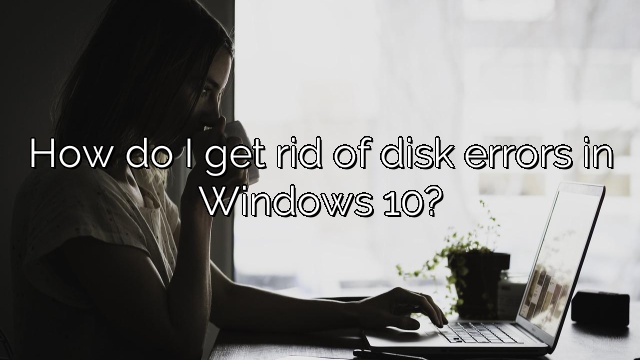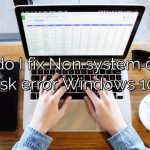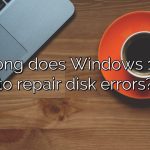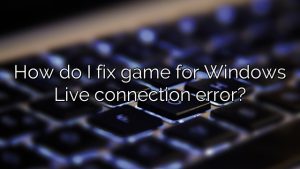
How do I get rid of disk errors in Windows 10?
Open File Explorer on Windows 10.
Click on This PC from the left pane.
Under the “Devices and drives” section, right-click the hard drive to repair and select the Properties option.
Click on the Tools tab.
Under the “Error checking” section, click the Check button.
Plug the bootable USB drive or disc to your system.
Press the power button to turn on the system and immediately start pressing the Boot Menu option key, usually F12 , to enter the boot menu .
Use up/down key to select the bootable USB drive or system repair/installation disc and hit Enter .
On Windows setup screen, click ‘ Next ’ and then click ‘ Repair your Computer ’.
Select Troubleshoot > Advanced Option > Startup Repair . Wait until the system is repaired.
Then remove the installation/repair disc or USB drive and restart the system and let Windows 10 boot normally.
How do I get rid of disk errors in Windows 10?
On the Windows Setup screen, click Next, then click Restore Your Last Computer. Choose Troubleshoot > New Option > Startup Repair. Wait for system recovery. Then remove the entire installation/recovery CD or USB flash drive, reboot the system and let ten windows start normally.
How do you fix a disk error?
Run the cleaning program on your desktop computer. This will minimize any files that can cause a valid memory error.
Defragment your computer. In some cases, this may be a processing issue.
Memory test.
Check your current cables.
Check your hard drive.
Reset most of the BIOS.
Reinstall your computer’s memory.
Replace memory.
What causes disk errors Windows 10?
There are good reasons why hard drive errors occur in Windows 10. In most cases, they really occur due to infection with a malicious virus, power failure, file corruption, bad sectors, power surges, and physical and other damage.
What do I do if there is a stuck repairing disk error in Windows 10?
Wait a few important hours and watch.
Remove all external devices.
Reboot in safe mode and start with the command to run chkdsk.
Run the restore volume command.
Use System Restore.
Run autostart repair.
Repair your computer device using the installation media. As well as
check Replace your company’s hard drive.
How to check your drive for errors in Windows 10?
To check for non-simple disk failures with an aesthetically pleasing user interface, follow these steps: Open Start.
Find System Monitor and click the first result to open the application.
Expand the Data Collector Sets branch.
Expand the System branch.
Right-click the System Diagnostics item, select the Start option.
Expand the Reports branch.
Expand the System branch.
Expand the “System Diagnostics” subtab.
Select a diagnostic report.
More values
How to repair a corrupted hard drive in Windows 10?
To start the recovery process for a damaged hard drive, open a command prompt in administrator mode (right-click the Start button and select Command Prompt (Admin)).
Enter the following command to start checking and fixing errors on an internal or external drive: chkdsk C: /F, where C is usually the drive letter.
Press Enter.
Additional Tools
How to fix disk not initialized problem on Windows 10?
What causes Windows 10 disk initialization problem? Solution 1 – Use Diskpart to fix the problem Using Diskpart can solve almost any tricky usage problem if you use it carefully.
Solution 2 – Clear CMOS batteries
Solution 3 – Update your hard drive driver
How do you fix a disc error?
How to fix Windows hard drive read error 1: solution xp/7/8/10 Boot the operating system from the hard drive. When a disk error occurs, the first thing to check is if the exact boot order in the BIOS is correct.
Solution 2 – Reset or update BIOS
Solution 3: The wizard restores the boot record as well as the boot sector.
Solution 4 – Thoroughly test your drive
Solution 5 – Check your IDE hard drive cables
Solution: Check your RAM.
Solution 7 – Restore data
When you try to boot the computer you get the error message Non system disk or disk error What is the most likely cause of this error message?
Method 2: Check the IDE or SATA cable of the hard drive. If the problematic hard drive’s IDE or SATA cable is faulty or not properly connected, the system often cannot read the computer and you may get a “non-system drive error”. .” Just connect the specific cable correctly, or buy a different one if the cable is damaged/faulty at all.

Charles Howell is a freelance writer and editor. He has been writing about consumer electronics, how-to guides, and the latest news in the tech world for over 10 years. His work has been featured on a variety of websites, including techcrunch.com, where he is a contributor. When he’s not writing or spending time with his family, he enjoys playing tennis and exploring new restaurants in the area.










